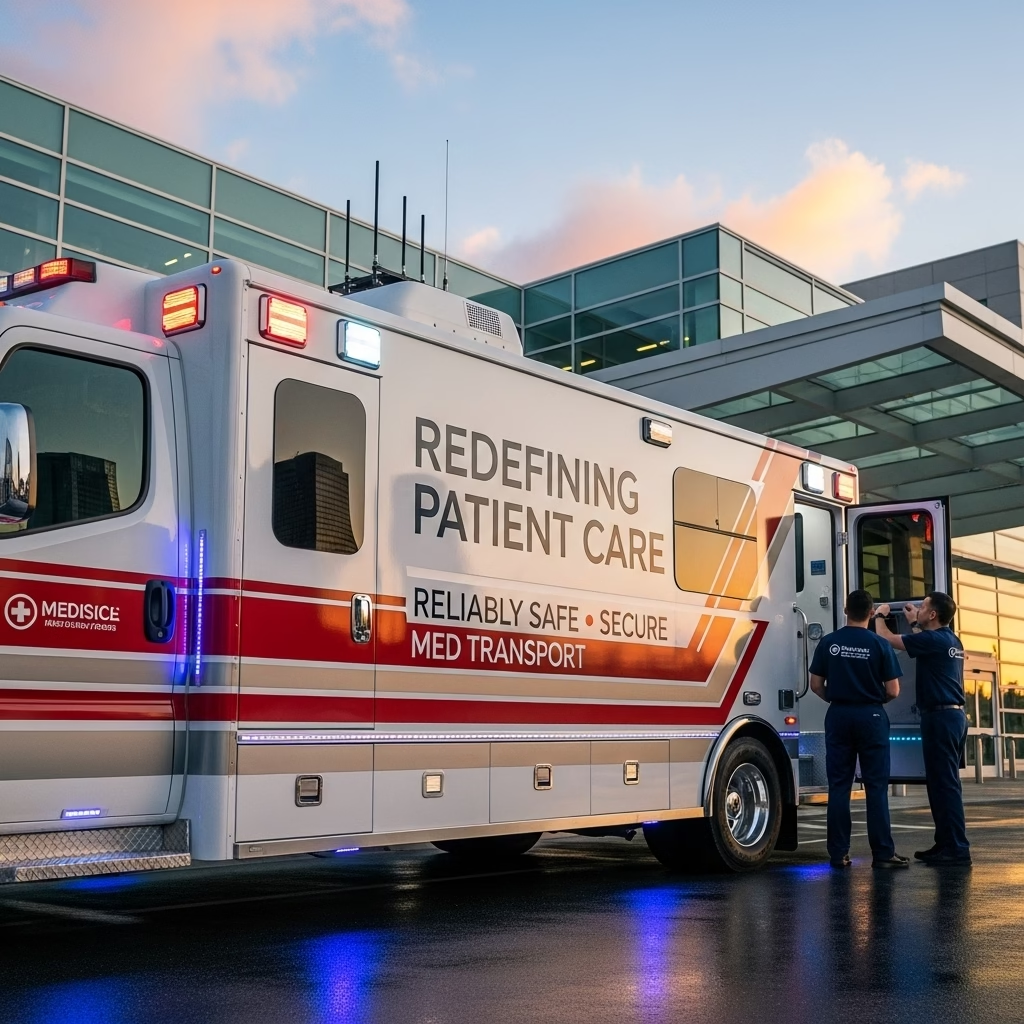HEALTH
Armor Correctional Health: Rise, Fall, and Legal Turmoil

Armor Correctional Health Services, founded in 2004 and based in Florida, once operated as a major for-profit provider of medical services in jails and prisons across the United States. At its peak, Armor held contracts in numerous counties and states, tasked with delivering healthcare to incarcerated individuals. However, over the years, the company became mired in legal trouble, financial instability, and damning accusations related to neglect and preventable deaths. This article provides a comprehensive look at the armor correctional health services lawsuit , major controversies, and eventual downfall of Armor Correctional Health Services.
A Pattern of Negligence: Early Lawsuits and Red Flags
Armor Correctional Health Services faced growing legal troubles beginning in the early 2010s. Lawsuits started to emerge, highlighting serious medical negligence and misconduct in its facilities. Critics consistently argued that Armor’s for-profit model prioritized cost-cutting over quality care. Consequently, this approach put vulnerable incarcerated individuals at significant risk.
By 2017, Armor had been sued over 500 times in various states. These lawsuits covered a wide range of allegations, including medical malpractice and wrongful death. Additionally, plaintiffs claimed the company falsified records and failed to provide essential, life-saving medications. Many argued that systemic issues within the organization fueled these repeated failures.
Moreover, former employees and families of affected inmates voiced their concerns publicly. They detailed how delays in care, ignored symptoms, and understaffing often led to severe outcomes. Despite mounting evidence and legal pressure, Armor continued to win contracts in some jurisdictions. However, investigations and media scrutiny increased over time, further damaging its public reputation.
As a result, the company faced escalating financial and legal consequences. Each new case added to a growing narrative of negligence and mismanagement. Ultimately, these persistent controversies painted a troubling picture of how profit-driven motives can compromise basic healthcare standards in correctional settings.
Florida: The Tragic Case of Misty Michelle Williamson
In one of the most publicized cases, Misty Michelle Williamson died of untreated pneumonia while incarcerated at the Santa Rosa County Jail in Florida. Williamson, a 39-year-old woman, showed clear signs of a serious medical issue but reportedly received no meaningful intervention from the jail’s medical staff—managed by Armor.
Her death led to a $6 million jury award to her estate in 2023. Although the jury initially awarded $10 million in punitive damages, a judge later struck that portion, stating the legal threshold for gross negligence was not met under Florida law. The case marked one of the largest judgments against Armor and highlighted what many critics described as a culture of indifference within the company.
Wisconsin: The Dehydration Death of Terrill Thomas
Perhaps one of the most harrowing examples of neglect under Armor’s watch occurred in Milwaukee County Jail. In 2016, Terrill Thomas, a 38-year-old mentally ill inmate, died of dehydration after jail staff shut off his water supply for seven days. Video surveillance and medical logs showed clear discrepancies between what medical staff claimed and what actually occurred.
Three Armor employees were charged and convicted of neglect and falsifying records. The company itself faced armor correctional health services lawsuit for failing to oversee its employees and protect inmates under its care. Milwaukee County ultimately paid $1.05 million in a legal settlement, adding to the growing financial and reputational cost of employing Armor’s services.
New York: Lawsuit and Settlement Over Multiple Deaths
In Nassau County, New York, Armor again came under fire when 12 inmates died within a span of just three years under its care. In 2016, then-New York Attorney General Eric Schneiderman filed a civil suit against the company, alleging gross negligence, delayed treatment, and poor record-keeping.
The investigation uncovered multiple instances where inmates with life-threatening conditions went untreated or were misdiagnosed. The armor correctional health services lawsuit concluded with a $350,000 settlement and a condition barring Armor from seeking new contracts in the state for three years.
This was a significant turning point, signaling not only legal consequences but a loss of credibility at the state level for the company.
Virginia: A State Cuts Ties with Armor
In 2021, the Virginia Department of Corrections terminated its contract with Armor, citing ongoing issues with medical quality and compliance. Armor challenged the decision in court, attempting to force the state to retain its services.
However, the Virginia Supreme Court denied Armor’s emergency motion, siding with the Department of Corrections and effectively allowing the state to sever ties. The episode further eroded Armor’s standing as a reliable healthcare provider and marked the beginning of a trend among states moving away from private prison healthcare contractors.
Duval County, Florida: The Heartbreaking Death of Dexter Barry
In 2022, Armor found itself at the center of another controversy following the death of Dexter Barry in Duval County Jail. Barry, a heart transplant recipient, was arrested and held for just two days. Despite informing jail staff of his need for critical anti-rejection medication, he was never given the drugs. He died just three days after being released.
Records later showed that Armor’s internal systems flagged Barry’s condition as urgent, yet no action was taken. The incident led to a armor correctional health services lawsuit filed by Barry’s family, which was settled in 2025 for an undisclosed sum.
This case outraged the local community and brought national attention to Armor’s practices, particularly as Jacksonville’s jail had previously renewed Armor’s contract despite its extensive litigation history.
Contract Terminations and Industry Backlash
Following repeated controversies, several counties and correctional institutions terminated their contracts with Armor. Flagler County, Florida ended its partnership in 2019 after the death of Anthony Fennick, an 18-year-old who suffered from seizures and was allegedly denied medical attention. His family also sued Armor for wrongful death.
Broward County also dropped Armor after it recorded 15 inmate deaths while the company was under contract. These events spurred a wider conversation about the oversight—or lack thereof—when private companies are tasked with public health responsibilities in jails.
Financial Collapse and Bankruptcy Filing
By late 2023, the accumulation of lawsuits, settlements, and legal fees proved too much for the company. Armor filed for bankruptcy in Miami-Dade County Circuit Court, reporting more than $150 million in unsecured debts.
In a controversial move, Armor proposed transferring its remaining assets to a new company, Enhanced Management Services (EMS), owned by Armor’s founder, Dr. Jose Armas. Critics described the maneuver as an attempt to shield executives and dodge responsibility for the company’s failures.
The bankruptcy filing listed hundreds of creditors, including lawyers, vendors, consultants, and families of deceased inmates. The liquidation process is ongoing as of 2025, but many fear the victims will never receive their full court-awarded compensation.
Ethical and Legal Questions Around Privatized Prison Healthcare
Armor’s collapse intensified scrutiny of privatized prison healthcare. Critics say profits clash with proper care. Companies cut costs dangerously, causing understaffing and delayed treatment.
Watchdog groups demand an end to private prison healthcare. They argue government-run systems, though flawed, prioritize lives over profits.
Experts now cite Armor as a warning. It shows the risks of privatizing vital services without strong oversight. Legal and public health studies use its failures as a key example.
Conclusion
The saga of armor correctional health services lawsuit warns against privatizing prison healthcare. Over two decades, its flawed practices caused preventable deaths. Public outrage grew as lawsuits piled up. These legal battles eventually bankrupted the company.
Though Armor no longer operates as before, its impact lingers. Families of the deceased still grieve. Inmates in its former facilities still suffer. The debate over prisoner treatment in the U.S. continues.
Policymakers must rethink correctional healthcare. The Armor case proves the need for transparency. It demands accountability. Most importantly, it requires upholding human rights—even behind bars.
HEALTH
How to Transport a Jacuzzi: A Complete Step-by-Step Guide

Moving a jacuzzi is not like moving regular furniture. These luxurious hot tubs are heavy, bulky, and delicate, requiring careful planning, the right equipment, and proper techniques to ensure a safe relocation. If you’ve been wondering how to transport a jacuzzi without causing damage to the spa, your property, or yourself, you’re not alone.
In today’s world of home upgrades and relocations, more homeowners are investing in hot tubs, which has made reliable jacuzzi transportation a sought-after service. This article will walk you through the planning, equipment, steps, and precautions required to move a jacuzzi safely—whether across your yard, to another property, or into storage.
Why Jacuzzi Transport Requires Extra Care
Unlike many household items, jacuzzis come with unique challenges:
-
Size and Weight: A typical jacuzzi can weigh anywhere between 400–900 pounds without water.
-
Delicate Parts: Pumps, jets, and electrical systems must be protected from damage.
-
Limited Access Points: Many need to be maneuvered through tight spaces or uneven terrain.
-
Safety Concerns: Lifting without proper support can cause injuries or property damage.
This is why learning how to transport a jacuzzi is essential before attempting the move.
Step 1: Planning the Move
The first step in transporting a jacuzzi is thorough planning. Consider the following:
-
Pathway Check: Measure doorways, gates, and hallways to ensure the jacuzzi fits.
-
Route Preparation: Remove obstacles such as outdoor furniture, plants, or debris.
-
Teamwork: Gather at least 3–4 people to help with lifting and maneuvering.
-
Professional Help: If the move seems too complex, hiring specialists is a safe option.
Proper preparation reduces stress and prevents costly mistakes during transport.
Step 2: Gathering the Right Equipment
The next step in understanding how to transport a jacuzzi is having the correct tools:
-
Furniture Dollies: Heavy-duty dollies help carry the weight.
-
Lifting Straps: Reduce strain on your back while distributing weight evenly.
-
Plywood Sheets: Create a smooth surface over grass, gravel, or uneven ground.
-
Protective Blankets: Prevent scratches and damage to the jacuzzi’s shell.
-
Ratchet Straps: Secure the jacuzzi during transportation on a trailer or truck.
Investing in proper equipment ensures the move is efficient and safe.
Step 3: Preparing the Jacuzzi
Before lifting, your jacuzzi must be fully prepared:
-
Drain the Water: Remove all water using the drain spout or a pump.
-
Disconnect Electrical Lines: Shut off power and carefully detach wiring.
-
Remove Accessories: Take off covers, steps, and detachable parts.
-
Clean the Spa: Dry the interior to avoid slippery surfaces during handling.
Only once these steps are completed should you begin the actual relocation.
Step 4: Lifting and Moving the Jacuzzi
Here’s the detailed process on how to transport a jacuzzi safely:
-
Tip the Jacuzzi on Its Side: With a team, carefully tilt it while ensuring stability.
-
Position on Dollies: Place furniture dollies under the base for easier rolling.
-
Secure with Straps: Use ratchet straps to prevent shifting during movement.
-
Navigate Slowly: Move gradually, especially around corners or uneven ground.
-
Use Plywood Paths: If crossing soft ground, place plywood sheets to create a firm surface.
Safety should remain the top priority throughout the move.
Step 5: Loading for Transport
When loading the jacuzzi onto a moving truck or trailer:
-
Use a Ramp: A sturdy loading ramp ensures smoother lifting.
-
Team Coordination: Communicate clearly to keep movements synchronised.
-
Secure Tightly: Strap the jacuzzi firmly against the truck or trailer wall.
-
Check Balance: Ensure even weight distribution to avoid shifting during transit.
Taking time at this stage prevents damage during road transport.
Step 6: Setting Up at the New Location
Once the jacuzzi arrives at its destination:
-
Unstrap Carefully: Remove securing straps without sudden movements.
-
Move into Position: Roll the jacuzzi to its new location with dollies.
-
Level the Ground: Ensure the surface is flat and capable of supporting the spa’s weight.
-
Reconnect Power and Plumbing: Hire an electrician if necessary to ensure proper setup.
-
Refill with Water and Test: Once everything is connected, fill and test the jacuzzi before use.
A successful setup ensures your jacuzzi is ready for relaxation again.
Common Mistakes to Avoid
When learning how to transport a jacuzzi, avoid these common errors:
-
Underestimating Weight: Never attempt the move alone.
-
Skipping Preparation: Failing to drain or disconnect properly can cause damage.
-
Improper Equipment: Using basic dollies or no straps increases risks.
-
Rushing the Process: Quick movements can lead to accidents.
-
Ignoring Professional Help: Some moves simply require experts.
Avoiding these mistakes makes the process smoother and safer.
Professional vs. DIY Jacuzzi Transport
Should you hire professionals or move the jacuzzi yourself?
-
DIY Transport: More cost-effective, but requires strength, tools, and teamwork.
-
Professional Movers: Costlier, but safer and ideal for complex moves (tight spaces, stairs, or long-distance).
If safety, convenience, and protection are priorities, professional services are often the best choice.
Looking Ahead: The Future of Jacuzzi Transport
As home wellness solutions like hot tubs and spas become more common, so does the demand for reliable jacuzzi transportation services. Companies are beginning to integrate advanced moving tools, GPS tracking, and specialized staff training to improve safety and efficiency.
Learning how to transport a jacuzzi will remain a valuable skill for homeowners, but the growing market for professionals ensures more reliable options for those who prefer expert handling.
Conclusion
Transporting a jacuzzi requires patience, preparation, and the right techniques. By following this step-by-step guide, you now understand how to transport a jacuzzi safely—protecting your investment, your home, and your health.
Whether moving it a few feet in your backyard or across town, the key is careful planning, teamwork, and prioritizing safety. For those unsure about the process, hiring professionals remains the most reliable option.
At the end of the day, moving your jacuzzi successfully means one thing—you’ll be back to enjoying warm, relaxing spa sessions without the stress of a risky move.
HEALTH
Redefining Patient Care with Reliably Safe Secure Med Transport

In healthcare, transportation is more than movement—it’s a lifeline. Whether it’s transferring patients to specialized facilities, ensuring timely emergency care, or providing safe travel for routine medical visits, transportation plays a critical role in the continuum of care. This is where reliably safe, secure medical transport stands out as an essential service, designed to bridge patient safety, comfort, and efficiency.
Just as modern leadership emphasizes both performance and purpose, medical transport today is about more than vehicles and schedules—it’s about building trust, reducing risks, and creating a patient-first experience.
What is Reliably Safe Secure Med Transport?
Reliably safe and secure med transport refers to specialized medical transportation services that prioritize patient well-being throughout the journey. Unlike standard transport, these services are equipped with:
-
Medical-grade vehicles designed for safety and accessibility.
-
Trained personnel who understand patient needs, from seniors to those with chronic conditions.
-
Advanced equipment to handle emergencies during travel.
At its core, this service ensures that every trip—whether routine or critical—is delivered with professional care, security, and reliability.
Why It Matters in Today’s Healthcare Landscape
Healthcare is evolving rapidly, and with it comes the need for reliable patient mobility solutions. Reliably safe and secure med transport is vital because:
-
Patient Safety: Transportation errors or unsafe conditions can risk lives. Specialized services mitigate those risks.
-
Access to Care: Many patients, particularly seniors or those with disabilities, rely on secure transport to reach essential medical services.
-
Peace of Mind: Families and caregivers feel reassured knowing their loved ones are in safe, professional hands.
This approach transforms transportation from a logistical challenge into a critical extension of healthcare delivery.
Core Principles of Safe Medical Transport
At the heart of reliably safe, secure med transport is a philosophy built on patient-centered values. These include:
-
Safety First: Vehicles equipped with safety features, sanitization protocols, and medical monitoring systems.
-
Compassionate Care: Staff trained not only in medical support but also in empathy and communication.
-
Accessibility: Services tailored for wheelchairs, stretchers, and patients with special mobility needs.
-
Reliability: Timely arrivals and departures, reducing stress for patients with scheduled treatments.
Together, these principles create a transport model that is both clinically sound and emotionally supportive.
Bridging Healthcare with Secure Transport Solutions
What makes this service noteworthy is its integration with broader healthcare outcomes. By ensuring safe and reliable travel, it directly supports:
-
Continuity of Care: Patients can attend follow-up appointments, dialysis sessions, or therapies without disruption.
-
Reduced Hospital Readmissions: Safe transport reduces risks of injury or complications that could lead to repeat hospital stays.
-
Community Wellness: Reliable transport helps patients remain engaged with their care plans, benefiting families and communities.
In essence, reliably safe and secure medical transport strengthens the link between healthcare systems and the patients they serve.
The Role of Technology in Modern Med Transport
Just as digital platforms have reshaped leadership communication, technology is reshaping patient transport. Key innovations include:
-
GPS Tracking: Families can monitor journeys in real time.
-
Digital Booking Systems: Patients or caregivers can schedule rides with ease.
-
Medical Monitoring Tools: Vital signs can be tracked during transit for high-risk patients.
-
Data Security: Ensuring patient information remains confidential throughout the process.
These advancements make medical transport not only safer but also more transparent and efficient.
A Model for Patient-Centered Healthcare
Reliably safe and secure med transport reflects a shift in patient expectations, especially among populations that value dignity, trust, and accountability. Just as new generations seek authenticity in leadership, patients and families now seek services that embody:
-
Transparency: Clear communication about procedures, costs, and care standards.
-
Inclusivity: Services that cater to all demographics, from children to the elderly.
-
Trust: Knowing that every trip is managed with the highest standards of safety.
This position medical transport providers as not just service operators but as partners in health and healing.
Challenges and Opportunities
Like any healthcare service, medical transport faces challenges:
-
Balancing Costs and Quality: Providing advanced vehicles and trained staff while keeping services affordable.
-
Staff Training: Ensuring personnel stay up-to-date with medical and safety standards.
-
Market Demand: Meeting the rising need for patient transport as populations age.
Yet these challenges also create opportunities:
-
Innovation in Equipment and Systems.
-
Expansion into underserved areas.
-
Building stronger collaborations with hospitals and clinics.
By embracing adaptability, med transport providers can ensure they remain both relevant and impactful in the future of healthcare.
Looking Ahead
The future of reliably safe, secure med transport lies in combining compassion with innovation. As technology advances, populations grow, and healthcare demands increase, secure patient transport will become even more critical.
Leaders in this space will be those who focus not only on efficiency but also on empathy, patient dignity, and trust. In doing so, they will set new standards for how transportation supports the health and well-being of communities.
Conclusion
Just as modern leadership redefines success by combining profit with purpose, medical transport redefines patient care by blending safety with compassion. Reliably safe and secure medical transport is not simply about moving patients from point A to B—it’s about ensuring every journey is comfortable, secure, and meaningful.
As healthcare evolves, these services will remain at the heart of patient trust, community resilience, and healthcare excellence.
BLOG
Theapknews.shop Health: Your Gateway to Wellness and Tech

In today’s fast-paced world, health and technology are increasingly intertwined. From fitness apps to telemedicine platforms, digital tools are revolutionising how we approach wellness. One platform that stands out in this space is theapknews.shop health, a hub for health-related apps, tips, and resources. This article explores the offerings of Theapknews.shop Health, its role in promoting wellness, and how it leverages technology to empower users on their health journeys.
What is Theapknews.shop Health?
Theapknews.shop Health is a dedicated section of Theapknews.shop, a popular platform known for providing reliable and up-to-date information about apps, software, and digital tools. The health segment focuses on curating and reviewing health, fitness, and wellness applications, offering users a one-stop destination for all their health-related needs. Whether you’re looking for a fitness tracker, a meditation app, or a diet planner, theapknews.shop health has you covered.
The platform is designed to cater to a wide audience, from fitness enthusiasts and wellness beginners to healthcare professionals and tech-savvy individuals. By combining expert reviews, user feedback, and detailed guides, It helps users make informed decisions about the tools they use to improve their well-being.
Key Features of Theapknews.shop Health
Theapknews.shop Health stands out for its comprehensive and user-friendly approach to health and wellness. Here are some of its key features:
- App Reviews and Recommendations: The platform provides in-depth reviews of health and fitness apps, highlighting their features, pros, and cons. This helps users choose the best tools for their specific needs.
- Wellness Guides and Tips: Theapknews.shop Health offers practical advice on topics such as nutrition, exercise, mental health, and sleep. These guides are designed to educate and inspire users to adopt healthier lifestyles.
- Latest Trends in Health Tech: Staying updated on the latest advancements in health technology is crucial. Theapknews.shop Health covers emerging trends, such as wearable devices, AI-driven health tools, and telemedicine platforms.
- User-Friendly Interface: The platform is easy to navigate, making it simple for users to find the information they need. Whether you’re searching for a specific app or browsing general wellness tips, the intuitive design ensures a seamless experience.
- Community Engagement: Theapknews.shop Health fosters a sense of community by encouraging users to share their experiences and feedback. This creates a collaborative environment where individuals can learn from one another.
The Role of Technology in Health and Wellness
It is a testament to the transformative power of technology in the health and wellness industry. Here’s how it leverages digital tools to promote well-being:
- Fitness and Activity Tracking: Fitness apps and wearable devices have made it easier than ever to monitor physical activity, set goals, and track progress. Theapknews.shop Health reviews popular fitness trackers like Fitbit, MyFitnessPal, and Strava, helping users find the right tools to stay active.
- Mental Health Support: Mental health is a critical component of overall wellness. The platform highlights apps like Calm, Headspace, and BetterHelp, which offer meditation, therapy, and stress management resources.
- Nutrition and Diet Planning: Maintaining a healthy diet is essential for well-being. Theapknews.shop Health features apps like MyPlate, Yazio, and Lifesum, which provide meal plans, calorie tracking, and nutritional advice.
- Telemedicine and Remote Care: The rise of telemedicine has made healthcare more accessible. The platform reviews apps like Teladoc and Amwell, which connect users with healthcare professionals for virtual consultations.
- Sleep Improvement: Quality sleep is vital for health. Theapknews.shop Health recommends apps like Sleep Cycle and Pillow, which analyse sleep patterns and provide tips for better rest.
Benefits of Using Theapknews.shop Health
It offers numerous benefits to users seeking to improve their health and wellness:
- Convenience: With its extensive database of apps and resources, Theapknews.shop Health saves users time and effort by providing all the information they need in one place.
- Expertise: The platform’s reviews and guides are backed by research and expert opinions, ensuring that users receive accurate and reliable information.
- Personalisation: By offering a wide range of options, Theapknews.shop Health allows users to find tools that align with their unique goals and preferences.
- Empowerment: The platform empowers users to take control of their health by providing them with the knowledge and tools they need to make informed decisions.
- Accessibility: It is accessible to everyone, regardless of their tech skills or fitness level. Its user-friendly design and clear instructions make it easy for anyone to get started.
Challenges and Considerations
While It offers many advantages, there are some challenges and considerations to keep in mind:
- Information Overload: With so many apps and resources available, users may feel overwhelmed. The platform must continue to provide clear, concise, and well-organised content to help users navigate their options.
- Privacy Concerns: Health apps often collect sensitive data, such as personal health information. Theapknews.shop Health must prioritise user privacy by recommending apps with strong data protection measures.
- Accuracy of Information: As health trends and technologies evolve, it’s essential for the platform to stay updated and ensure that its content remains accurate and relevant.
- Inclusivity: Theapknews.shop Health should strive to cater to diverse audiences, including individuals with disabilities, chronic illnesses, or specific cultural needs.
The Future of Theapknews.shop Health
As technology continues to advance, theapknews.shop health is poised to play an even greater role in promoting wellness. Here are some potential developments to look forward to:
- Integration with Wearable Tech: The platform could expand its coverage of wearable devices, such as smartwatches and fitness bands, which are becoming increasingly popular for health monitoring.
- AI-Driven Personalisation: By incorporating artificial intelligence, Theapknews.shop Health could offer even more personalised recommendations based on user behaviour and preferences.
- Global Reach: Expanding its content to include apps and resources for non-English-speaking audiences could help Theapknews.shop Health reach a broader, more diverse user base.
- Collaborations with Health Experts: Partnering with healthcare professionals and wellness experts could enhance the platform’s credibility and provide users with even more valuable insights.
Conclusion: A Healthier Future with Theapknews.shop Health
It is more than just a platform for app reviews; it’s a comprehensive resource for improving health and well-being. By blending technology, expertise, and user-friendly design, it empowers individuals to take charge of their wellness journeys. In an increasingly digital world, such platforms bridge the gap between technology and health. Whether you’re a fitness enthusiast, mental health advocate, or simply seeking a healthier life, it’s your trusted partner in achieving goals. The future of wellness is here, and it’s just a click away.
-

 EDUCATION4 months ago
EDUCATION4 months agoHCOOCH, CH₂, and H₂O: Key Molecules in Chemistry and Life
-

 BLOG3 months ago
BLOG3 months agoTeenthailand_11_SC1: Unveiling Thailand’s Youth Culture
-

 BLOG4 months ago
BLOG4 months agoTheapknews.shop Health: Your Gateway to Wellness and Tech
-

 EDUCATION6 months ago
EDUCATION6 months agoQawerdehidom: Origins, Principles, and Modern Applications
-

 ENTERTAINMENT4 months ago
ENTERTAINMENT4 months agoWhat Are Coachella Co-Chairs: The Visionaries Behind the Iconic Festival
-

 BLOG7 months ago
BLOG7 months agoPO18: A Comprehensive Guide to Its Meaning and Applications
-

 EDUCATION4 months ago
EDUCATION4 months agoNowCollege 1v1: Redefining Personalized Higher Education
-

 ENTERTAINMENT7 months ago
ENTERTAINMENT7 months agoKuttymovies7: A Comprehensive Look at the Controversial Movie Piracy Platform
